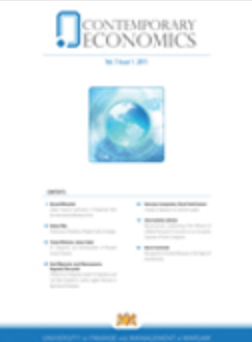Measuring economic spatial evolutional trend of Central and Eastern Europe by SDE method
Measuring economic spatial evolutional trend of Central and Eastern Europe by SDE method
Author(s): Xiaoxin Yang, Adriana GrigorescuSubject(s): Geography, Regional studies, Methodology and research technology, Demography and human biology, Economic development, Transformation Period (1990 - 2010), Present Times (2010 - today)
Published by: Akademia Ekonomiczno-Humanistyczna w Warszawie
Keywords: economic landscape; evolution of space time; spatial difference; the standard deviation ellipse; economic development;
Summary/Abstract: The economic crisis affected the Central and Eastern European economic spatial structure and reshaped perspectives at the European Union and international levels. Whereas Western Europe’s stable economic system has entered maturity, Eastern Europe’s economic landscape is still constantly evolving and improving. From a geographical perspective, based on standard distance and the standard deviational ellipse method, we examine the space-time evolution of the Central and Eastern European economy from 1995-2015. During this period, the Central and Eastern European economic spatial barycenter moves northeastward, and the economic distribution scale extends north-south in space. At the same time, the demographic barycenter moves northwestward, with an intense contraction in space. By comparing the economic and demographic standard deviation ellipses, we found a large degree of spatial differentiation, which gradually decreases. This trend shows that in Central and Eastern Europe, the economic development and demographic distribution is not symmetrical, and there still is large potential for the internal market. We propose that Eastern European countries such as Romania and Bulgaria, which have an abundant population, can increase investment in their home market by linking up with Asian countries. This connection can enable them to make full use of external capital, mine demographic advantages and exploit the benefits of being the hub of both Europe and Asia.
Journal: Contemporary Economics
- Issue Year: 11/2017
- Issue No: 3
- Page Range: 253-266
- Page Count: 14
- Language: English

